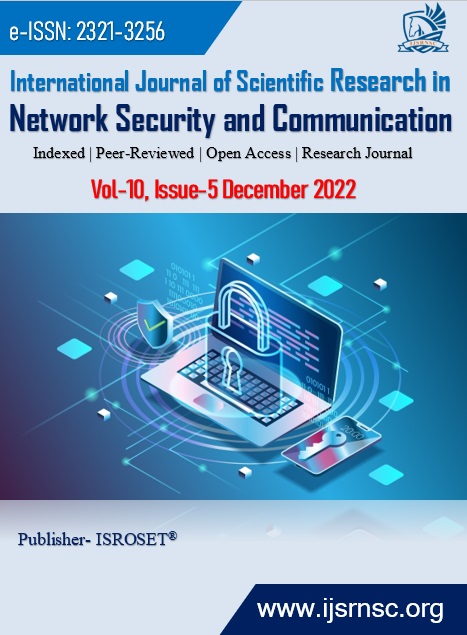Implementation of Intrusion Detection and Prevention System Based on Software Approachs
Keywords:
Intrusion Detection, Intrusion Prevention, PfSense, Security, SnortAbstract
The detection of security vulnerabilities is ever more difficult as cyber-attacks get more complicated. The faith in security services like data confidentiality and integrity is eroded by a failure to prevent security breaches. The literature has suggested a number of intrusion detection techniques to counter computer security risks. This effort aims to create an intrusion detection and prevention system, or "IDPS,” An integrated system that maximizes each factor`s advantages while reducing its disadvantages is the proposed solution for intrusion prevention. By demonstrating how attackers can elude detection. The outcome of this research is a security system that can recognize attack attempts, block the IP address of the attacker, and carry out network forensic investigations. According to the findings of our study, Snort the IPS mode in PfSense, can identify assaults aimed at your system, and PfSense, having visualization capability, immediately implements preventive actions by blocking the attacker`s IP address. Network forensics can use this method to conduct an investigation into an attack and determine whether the attack is having a negative impact based on the alarms produced by the snort. It also sheds light on potential future research challenges to stop these attacks and strengthen computer systems` security.
References
N.Gavrilovi?1, V. ?iri?1, N.Lozo1, “Snort IDS System Visualization Interface for Alert Analysis”, Serbian Journal of Electrical Engineering, Vol. 19, No. 1, pp. 67-78, 2022.
A. Tasneem, A. Kumar, S. Sharma, “Intrusion Detection Prevention System using SNORT”, International Journal of Computer Applications, Vol.181, No. 32, pp. 0975 – 8887, 2018.
K. Langsari, “Intrusion Detection System (IDS)”, Institut Teknologi, Sepuluh Nopember (ITS), indonessia, pp.1-14 2015.
A.M. Resmi, Dr. R M. chezian, “Intrusion Detection System Techniques and Tools: A Survey”, Scholars Journal of Engineering and Technology, Vol.5, No. 3, pp. 122-130, 2017.
J. Surana, J. Sharma, I. Saraf, N. Puri,B. Navin, “A Survey On Intrusion Detection System”, International Journal of Engineering Development and Research, Vol. 5, Issue 2, pp. 960-965, 2017.
A. Kukruza, M. Tayyem, “Snort and beyond”, Research Papet, TCD 577, pp. 1-3, 2018.
H. Hilal, A. Ghafri, Z. Z. Abidin, K. Kurbonov, R. Yusof, “Implementation of Intrusion Detection System using Snort”, Journal of Advanced computing Technology and Application, Vol. 1, No. 1, pp. 1-7, 2019.
F. Erlacher, F. Dressler, “On High-Speed Flow-based Intrusion Detection using Snort-compatible Signatures”, IEEE Transactions on Dependable and Secure Computing, VOL. XX, NO. YY, pp. 1-6, 2019.
H.P. Rao, M.R. Anirudh, U.S. Diksha, S. D. Bhuvana,” Portable Intrusion Detection System”, International Journal of Engineering and Advanced Technology (IJEAT), Vol. 9 Issue. 5, pp. 1258- 1260, 2020
J. Verma, A Bhandari and G Singh,” Review of Existing Data Sets for Network Intrusion Detection System”, Advances in Mathematics; Scientific Journal, vol.9, No. 6, pp. 3849-3854, 2020
S. Sasikumar, K.S. Abhay, V. (C.N.S) kumar,” Network Intrusion Detection and Deduce System”, Turkish Journal of Computer and Mathematics Education, Vol.12, No.9, pp. 404-410, 2021.
J. Ebrima, X. Wang,”A novel hybrid-based approach of snort automatic rule generator and security event correlation (SARG-SEC)”, PeerJ Computer Science, vol. 10, No. 7717, pp. 4-31, 2022
R D. Mounika, R. Naresh, “The concept of Privacy and Standardization of Microservice Architectures in cloud computing”, European Journal of Molecular & Clinical Medicine, Vol. 7, No 2, pp. 5349-5370, 2020.
F. A. Saputra, Saputra, M. Saputra, J. A. N. Hasim, I. U. Nadhori, & K. Ramli, “The Next?Generation NIDS Platform: Cloud?Based Snort NIDS Using Containers and Big Data”, Big Data and Cognitive Computing, Vol. 6, Issues 1, pp.1-19, 2022.
Downloads
Published
How to Cite
Issue
Section
License

This work is licensed under a Creative Commons Attribution 4.0 International License.
Authors contributing to this journal agree to publish their articles under the Creative Commons Attribution 4.0 International License, allowing third parties to share their work (copy, distribute, transmit) and to adapt it, under the condition that the authors are given credit and that in the event of reuse or distribution, the terms of this license are made clear.









